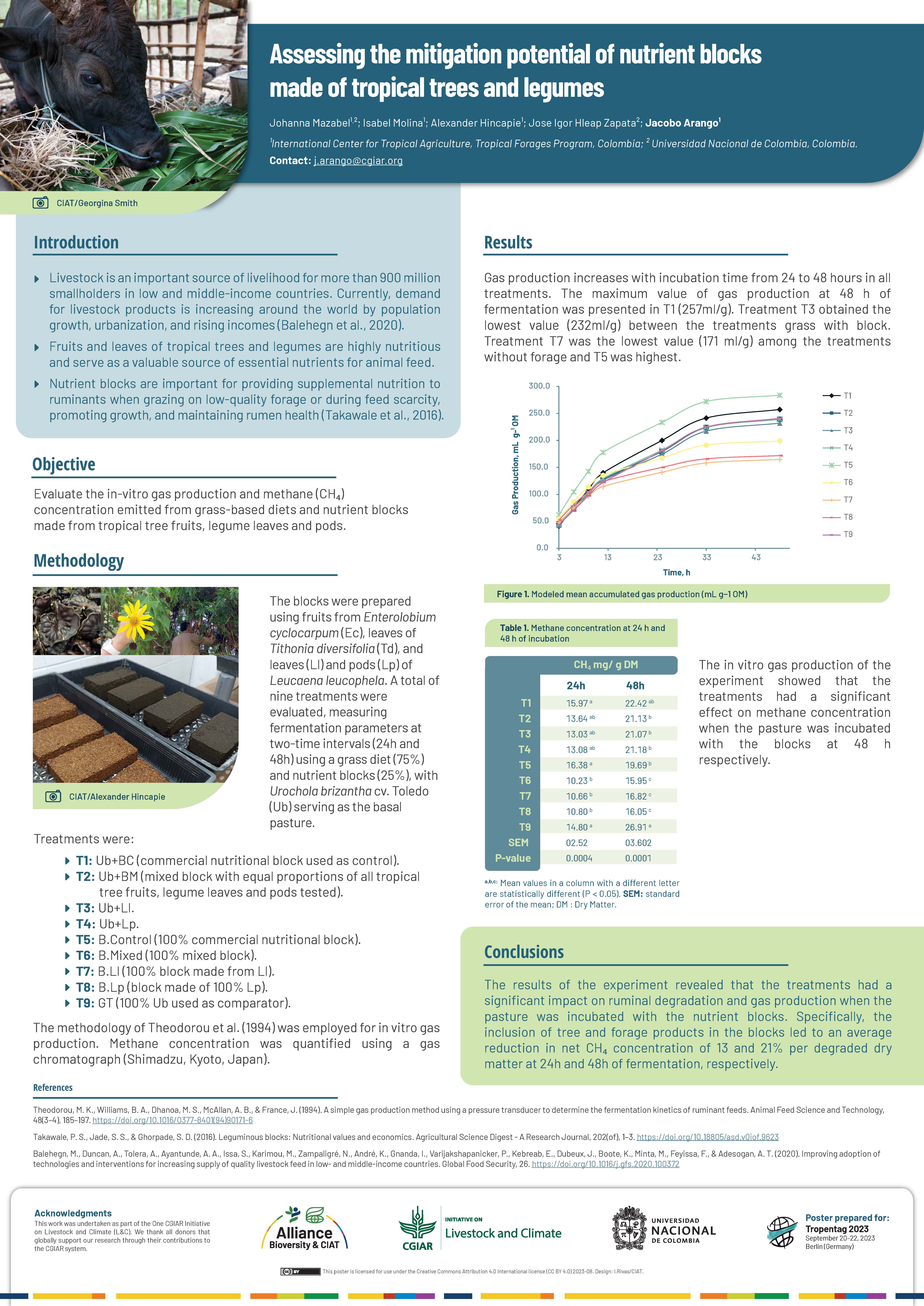
Description
Description
- Livestock is an important source of livelihood for more than 900 million smallholders in low and middle-income countries. Currently, demand for livestock products is increasing around the world by population growth, urbanization, and rising incomes (Balehegn et al., 2020).
- Fruits and leaves of tropical trees and legumes are highly nutritious and serve as a valuable source of essential nutrients for animal feed.
- Nutrient blocks are important for providing supplemental nutrition to ruminants when grazing on low-quality forage or during feed scarcity, promoting growth, and maintaining rumen health (Takawale et al., 2016).
Comments
Very interesting results. How could this be implemented at farm level? Can these nutrient blocks be produced at large scale at affordable costs?
How does the reduction in methane production affect production. What percentage?
I think the next step is to do an economic analysis.
It remains to do an economic analysis.
What is used as a binder
What are the reasons for the lower gas emissions?
Can you share the data for an economic analysis?
Gas production is usually used to estimate digestibility. In this case reduced gas production is seen as a positive since it generates less methane. But reduced gas production also indicates lower digestibility. So not all good news. Is is possible to distinguish between digestibility reduction and methane production?
How probable is adoption of feed blocks?
Add new comment